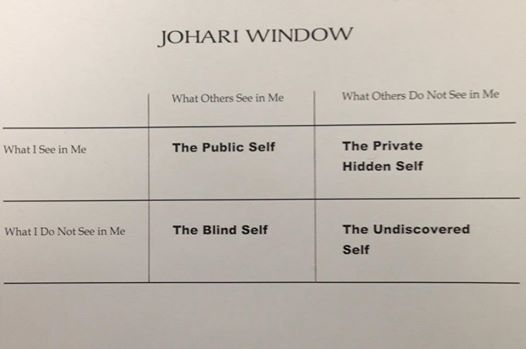
The undiscovered self shows up when you least expect it, and usually not in a constructive way. It can happen in a meeting when a superior browbeats you and you do not respond. It can happen when your partner makes an innocent observation and you fly off the handle. It can happen when you avoid social situations because they make you feel uncomfortable. You do not know why you react the way you do, but it is too late to recover when it does happen.
There is a way to explore the undiscovered self, but first it is important to understand the concept.
The Johari window was created in 1955 by psychologists Joseph Luft and Harrington Ingham. Basically, it is a self-help tool designed to help people discover how they perceive themselves, how others perceive them, and why we sometimes act “out of character.”
As shown in the diagram, the window has four panes. The public self is how others see you and how you see yourself. The blind self is where others see something in you that you either ignore, or are unaware of. The Private Self is where you are self-aware of personality traits that the public is not able to see. The final pane is the undiscovered self, an area where neither you nor others have knowledge.
The undiscovered self develops during the formative first five years of life. During that time a child learns how to “behave” by the caregiver(s). John Bowlby and Mary Ainsworth developed the Attachment theory which postulates that there are three types of attachment styles a child learns from the caregiver. How a grown person unknowing reacts to different stimuli can be dependent upon the influence of the formative attachment style.
The good news is that by discovering your attachment style, you can change. It takes work and self-exploration, but the payoff is that you can change to a more productive way of reacting.
